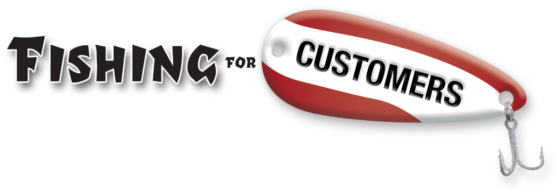 Thus far in the Marketing P.A.I.N. Series, you’ve seen the value of talking to your customer about the exact discomfort she’s experiencing.
Thus far in the Marketing P.A.I.N. Series, you’ve seen the value of talking to your customer about the exact discomfort she’s experiencing.
You’re able to identify four stages of pain. You can help your customers to identify with your solution at each stage of pain.
You know how to use that identification to help your advertising messages to cut through the media clutter to get their attention. You’ve learned to propose a solution appropriate for each pain stage.
Is that all it takes to make a sale?
Not quite. Although you now have your prospect’s attention, you still have no credibility with her. This is where acknowledgment of her pain mindset comes in. There are only two:
1. People in a Transactional mindset believe they know everything necessary to choose the right solution for their pain. Transactional shoppers are primarily interested in prices.
2. But people in a Relational mindset are well aware that they don’t know enough to make an uninformed decision. They’re seeking an expert they can trust.
In every business category, roughly half of the customers fall into each designation. And depending on what it is we’re shopping for, we each are already both.
Buy whichever gas is cheapest? Purely a transactional move. Choose to dine at Mario’s Spaghetti House because the waitresses all flirt with you? You’re as relational as they come – at least when it comes to spaghetti.
No message can appeal to both pain mindsets.
Did you notice that these mindsets tend to be polar opposites? The right thing to say to one is exactly the wrong thing to say to the other.
To get the attention of Transactional shoppers, you could offer reduced fees, promotional sales events, or coupons. If you charge “too much,” you have no credibility with them.
But Relational shoppers want to know you understand them, and that they can count on you to offer informed advice. Anything which indicates you are driven solely by profit, rather than concern for your customers, costs you credibility with Relationals.
Examples:
(click to enlarge)
Either can be a profitable customer base, so it comes down to the kind of business you’re comfortable running.
If you enjoy a fast-paced, “Wham. Bam. Next.” (oh, and “thank you”) style of operation, you may be able to compete on price to reach Transactional shoppers.
But a more methodical, slower-paced, “get to know the customer” style of business necessitates appealing to Relationals, who are willing to pay higher prices, and are more likely to continue being profitable customers over the long-term.
There’s an added benefit to getting the attention of Transactional patients. They contribute to “buzz” about you in the community. Relational customers are responsible for the more slowly growing “word-of-mouth.”
Let’s tie it all together.
Multiply four stages of pain by two pain mindsets, and it becomes obvious that there are only eight possible message positions.
Look at how much more credible the message becomes when you catch the shopper’s attention (by identifying the stage of pain), and then present your message in accordance with the pain mindset she’s already inclined to trust.
(click to enlarge)
The marketing of every service business, of every retail business, of every not-for-profit can be described in one of these eight positions.
Why only one position?
Few businesses have the financial resources to simultaneously pursue two completely different markets.
Since each marketing position resonates with a different group of shoppers, each position is ignored by other groups. Any impression you may have already made will not have been noticed by your second target.
Once you’ve expended the resources to anchor your message firmly in a prospective customer’s mind, you’ll get the best return on your advertising investment by sticking to that position, and building on it.
Please note: This does not mean that you can’t change the message, only that the message position – the stage of pain and mindset it addresses – remains the same.
Choose the position with the greatest potential.
You must decide whether you prefer to work with Transactional or Relational customers. And you must identify the stage of pain at which you choose to offer your solution.
Which factors do you balance?
Which segment has the greatest growth potential for your business?
Is that segment big enough to support your business?
Will this result in the type of business you’d care to run?
Can you begin to see the power of the Marketing P.A.I.N. concept?
When your local media rep invites you to become a sponsor of a new promotion, you simply need to compare the promotion’s focus against your eight position grid.
If it matches, consider the investment. If not, pass.
Once you’ve identified your position, you’ll instantly know whether any advertising you’re considering will help your business to grow.
Your Guide,
Chuck McKay
 Your Fishing for Customers guide, Chuck McKay, gets people to buy more of what you sell.
Your Fishing for Customers guide, Chuck McKay, gets people to buy more of what you sell.
Questions about focusing on the issues your customers care about may be directed to ChuckMcKay@ChuckMcKayOnLine.com. Or call Chuck at 304-208-7654.
Marketing P.A.I.N. Series


